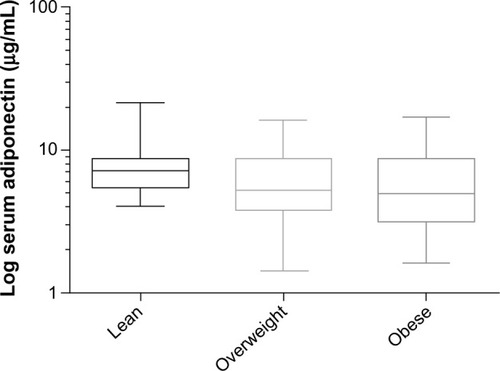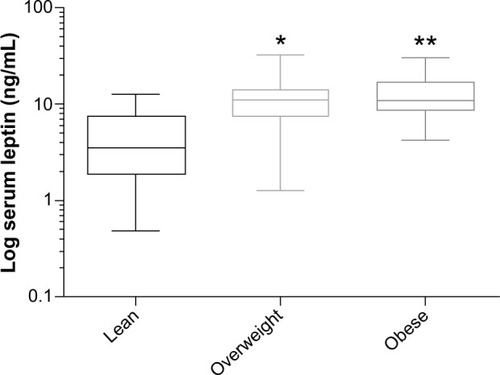Figures & data
Table 1 Median and range as a percentage for all major omega-3 fatty acids, linoleic acid, and arachidonic acid evaluated in serum phospholipids as measured by capillary gas–liquid chromatography
Figure 1 Box and whisker plot of mean log-transformed serum adiponectin concentration and its association with BCS.
Abbreviation: BCS, body condition score.

Table 2 Multivariable linear regression showing the effect of EPA, DHA, and age on adiponectin; R2=0.19; P=0.001
Figure 2 Box and whisker plot of mean log-transformed serum leptin concentration and its association with BCS.
Abbreviation: BCS, body condition score.

Table 3 Multivariable linear regression showing the effect of DHA, DPA, and BCS on leptin; R2=0.39; P<0.0001
Figure 3 Box and whisker plot of mean log-transformed serum insulin and its association with BCS.
Abbreviation: BCS, body condition score.

